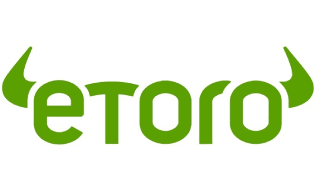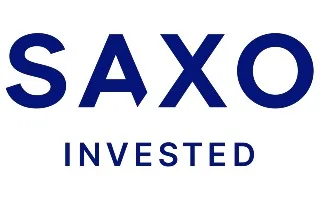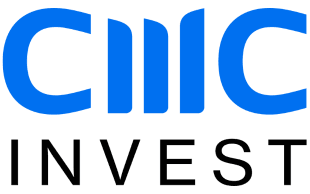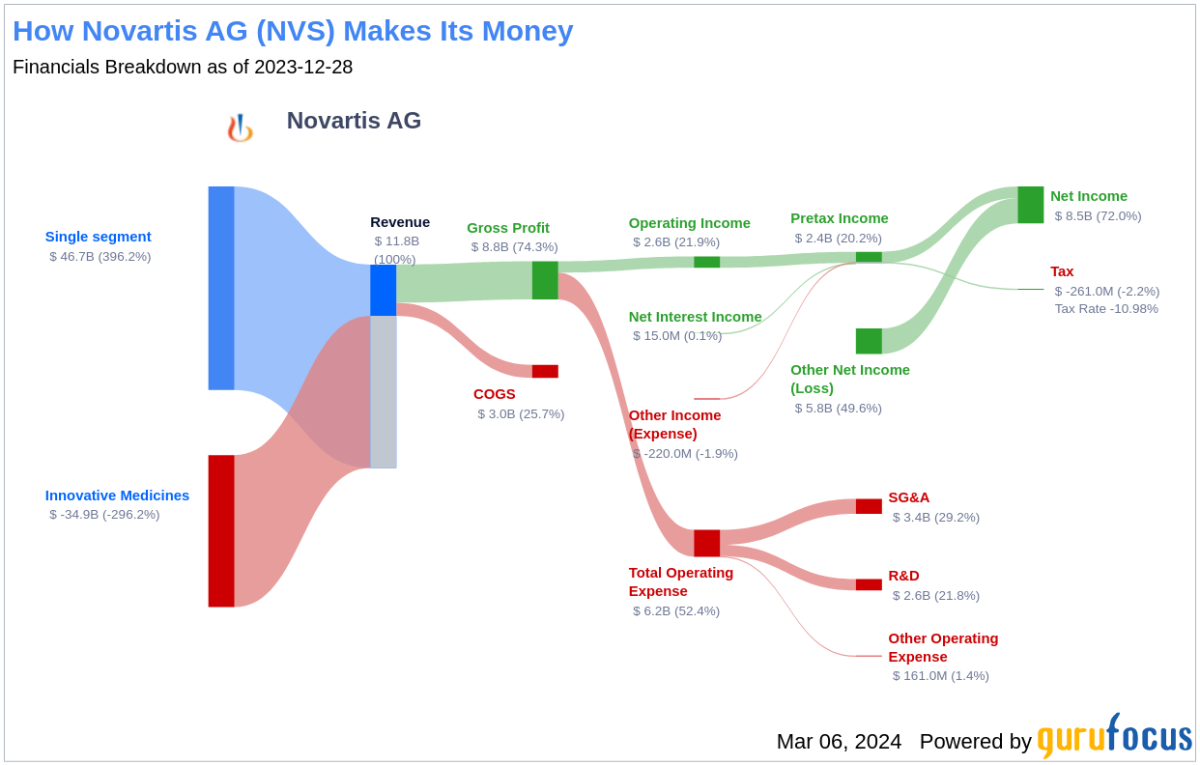$97.71
Novartis AG ADR is a drug manufacturers - general business with stocks listed in the US. Novartis shares (NVS) are listed on the NYSE and all prices are listed in US Dollars. Its last market close was US$97.28 – an increase of 4.51% over the previous week. Here's how to invest if you're based in Australia.
How to buy shares in Novartis
- Compare share trading platforms. To buy shares in a company listed in the US from Australia you'll need to find a trading platform that offers access to US stock markets. Look for a platform with low brokerage and foreign exchange fees.
- Open and fund your brokerage account. Complete an application with your personal and financial details, which will typically include your ID and tax file number. Fund your account with a bank transfer, credit card or debit card.
- Search for Novartis. Find the share by name or ticker symbol: NVS. Research its history to confirm it's a solid investment that matches your financial goals.
- Purchase now or later. Buy today with a market order or use a limit order to delay your purchase until Novartis reaches your desired price. To spread out your risk, look into dollar-cost averaging, which smooths out buying using consistent intervals and amounts.
- Decide on how many to buy. At last close price of US$97.28, weigh your budget against a diversified portfolio that can minimise risk through the market's ups and downs. You may be able to buy a fractional share of Novartis, depending on your broker.
- Check in on your investment. Congratulations, you own a part of Novartis. Optimise your portfolio by tracking how your stock — and even the business — performs with an eye on the long term. You may be eligible for dividends and shareholder voting rights.
Our top pick for
US stocks

Our top pick for
Best for beginner

Our top pick for
Dividend investing

Novartis stock price (NYSE:NVS)
Use our graph to track the performance of NVS stocks over time.Have Novartis's shares ever split?
Novartis's shares were split on a 1116:1000 basis on 8 April 2019. So if you had owned 1000 shares the day before the split, the next day you would own 1116 shares. This wouldn't directly have changed the overall worth of your Novartis shares – just the quantity. However, indirectly, the new 10.4% lower share price could have impacted the market appetite for Novartis shares which in turn could have impacted Novartis's share price.
Novartis shares at a glance
| 52-week range | US$85.594 - US$104.7768 |
|---|---|
| 50-day moving average | US$98.8144 |
| 200-day moving average | US$99.8474 |
| Target price | US$113.76 |
| PE ratio | 22.7317 |
| Dividend yield | US$3.919 (4.05%) |
| Earnings per share (TTM) | US$4.1 |
Use the fields above to explore the returns from a historical investment. Please refer to the charts further up this page to see performance over 5 years, or other periods. Past performance doesn't indicate future results. Capital is at risk.
Novartis price performance over time
Historical closes compared with the last close of $97.28
| 1 week (2024-04-17) | 4.51% |
|---|---|
| 1 month (2024-03-22) | 1.09% |
| 3 months (2024-01-24) | -9.55% |
| 6 months (2023-10-24) | 2.50% |
| 1 year (2023-04-24) | 2.20% |
|---|---|
| 2 years (2022-04-22) | 15.24% |
| 3 years (2021-04-23) | 10.21% |
| 5 years (2019-04-24) | 25.01% |
Compare trading platforms to buy Novartis shares
Is it a good time to buy Novartis stock?
The technical analysis gauge below displays real-time ratings for the timeframes you select. However, this is not a recommendation. It represents a technical analysis based on the most popular technical indicators: Moving Averages, Oscillators and Pivots. Finder might not concur and takes no responsibility.
Is Novartis under- or over-valued?
Valuing Novartis stock is incredibly difficult, and any metric has to be viewed as part of a bigger picture of Novartis's overall performance. However, analysts commonly use some key metrics to help gauge the value of a stock.
Novartis's P/E ratio
Novartis's current share price divided by its per-share earnings (EPS) over a 12-month period gives a "trailing price/earnings ratio" of roughly 23x. In other words, Novartis shares trade at around 23x recent earnings.
That's relatively low compared to, say, the trailing 12-month P/E ratio for the NASDAQ 100 at the end of 2019 (27.29). The low P/E ratio could mean that investors are pessimistic about the outlook for the shares or simply that they're under-valued.
Novartis's PEG ratio
Novartis's "price/earnings-to-growth ratio" can be calculated by dividing its P/E ratio by its growth – to give 5.0912. A low ratio can be interpreted as meaning the shares offer better value, while a higher ratio can be interpreted as meaning the shares offer worse value.
The PEG ratio provides a broader view than just the P/E ratio, as it gives more insight into Novartis's future profitability. By accounting for growth, it could also help you if you're comparing the share prices of multiple high-growth companies.
Novartis's EBITDA
Novartis's EBITDA (earnings before interest, taxes, depreciation and amortisation) is US$17.5 billion (£14.1 billion).
The EBITDA is a measure of a Novartis's overall financial performance and is widely used to measure stock profitability.
Novartis share price volatility
Over the last 12 months, Novartis's shares have ranged in value from as little as US$85.594 up to US$104.7768. A popular way to gauge a stock's volatility is its "beta".
Beta measures a share's volatility in relation to the market. The market (NYSE average) beta is 1, while Novartis's is 0.475. This would suggest that Novartis's shares are less volatile than average (for this exchange).
Novartis financials
| Revenue TTM | US$46.7 billion |
|---|---|
| Operating margin TTM | 25.37% |
| Gross profit TTM | US$36.7 billion |
| Return on assets TTM | 7.27% |
| Return on equity TTM | 16.15% |
| Profit margin | 31.83% |
| Book value | 22.831 |
| Market capitalisation | US$190.5 billion |
TTM: trailing 12 months
Novartis share dividends
Dividend payout ratio: 54.74% of net profits
Recently Novartis has paid out, on average, around 54.74% of net profits as dividends. That has enabled analysts to estimate a "forward annual dividend yield" of 4.05% of the current stock value. This means that over a year, based on recent payouts (which are sadly no guarantee of future payouts), Novartis shareholders could enjoy a 4.05% return on their shares, in the form of dividend payments. In Novartis's case, that would currently equate to about $3.919 per share.
Novartis's payout ratio would broadly be considered high, and as such this stock could appeal to those looking to generate an income. Bear in mind however that companies should normally also look to re-invest a decent amount of net profits to ensure future growth.
Novartis's most recent dividend payout was on 19 March 2023. The latest dividend was paid out to all shareholders who bought their shares by 6 March 2024 (the "ex-dividend date").
Novartis overview
Novartis AG engages in the research, development, manufacture, and marketing of healthcare products in Switzerland and internationally. The company offers prescription medicines for patients and physicians. It focuses on therapeutic areas, such as cardiovascular, renal and metabolic, immunology, neuroscience, and oncology, as well as ophthalmology and hematology. Novartis AG has a license and collaboration agreement with Alnylam Pharmaceuticals to develop, manufacture, and commercialize inclisiran, a therapy to reduce LDL cholesterol; and Dawn Health for the development and commercialization of Ekiva, a digital solution designed for people living with Paroxysmal Nocturnal Hemoglobinuria. The company was incorporated in 1996 and is headquartered in Basel, Switzerland.
Stocks similar to Novartis
Novartis in the news

Novartis (NVS) Stock Dips While Market Gains: Key Facts

3 Dividend Stocks to Buy Hand Over Fist in March

Novartis AG's Dividend Analysis
Frequently asked questions
More guides on Finder
-
How to invest in the Sun Silver IPO
Everything we know about the Sun Silver IPO, plus information on how to buy in.
-
How to invest in the Tasmea Limited IPO
Everything we know about the Tasmea Limited IPO, plus information on how to buy in.
-
How to buy Far Northern Resources shares
Steps to owning and managing Far Northern Resources shares.
-
What are the best commodity ETFs on the ASX in 2024?
Commodity ETFs can be used to hedge against inflation. Here's what they do, why they should be on your watchlist and how they can help your portfolio.
-
Best performing stocks on the ASX in 2024 (Updated weekly)
Looking for the best performing stocks in Australia? We update this list weekly.
-
How to buy Gol Linhas Aereas Inteligentes SA ADR (GOL) shares in Australia
Steps to owning and managing Gol Linhas Aéreas Inteligentes SA shares from Australia.
-
Superhero review: ASX and US share trading app
Trade ASX stocks and ETFs with a $2 brokerage fee and a low minimum investment of just $10.
-
The cheapest ETFs on the ASX
These ETFs have the lowest fees on the market, but does that make them the best?
-
Alternatives to CommSec: 7 trading platforms to consider
You've heard of CommSec but how does it stack up to the likes of IG, CMC Invest and other players in the market?
-
Westpac Share Trading Account review
Westpac Share Trading allows you to take control of your investments. Find out if its right for you.
Ask a Question
